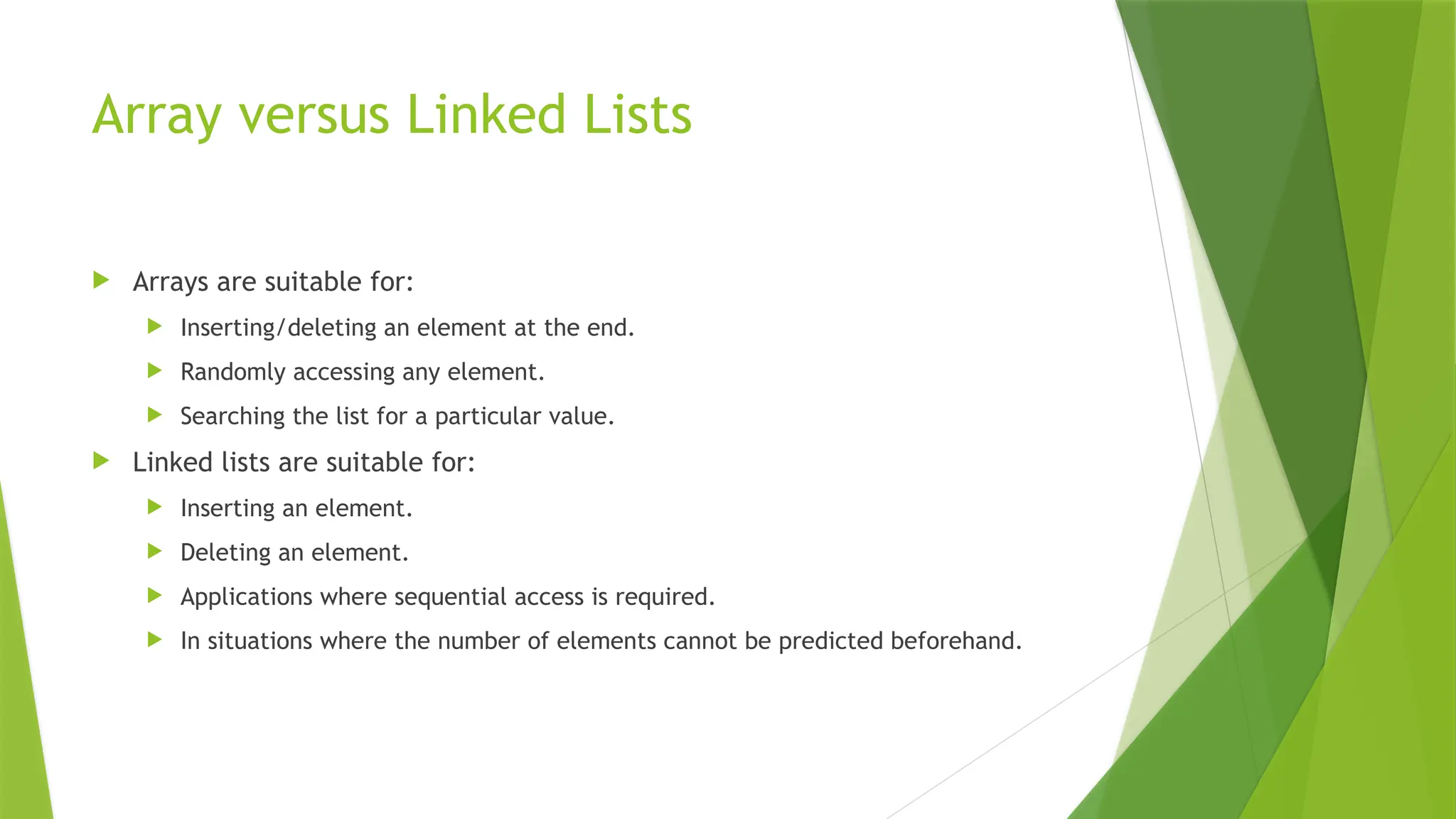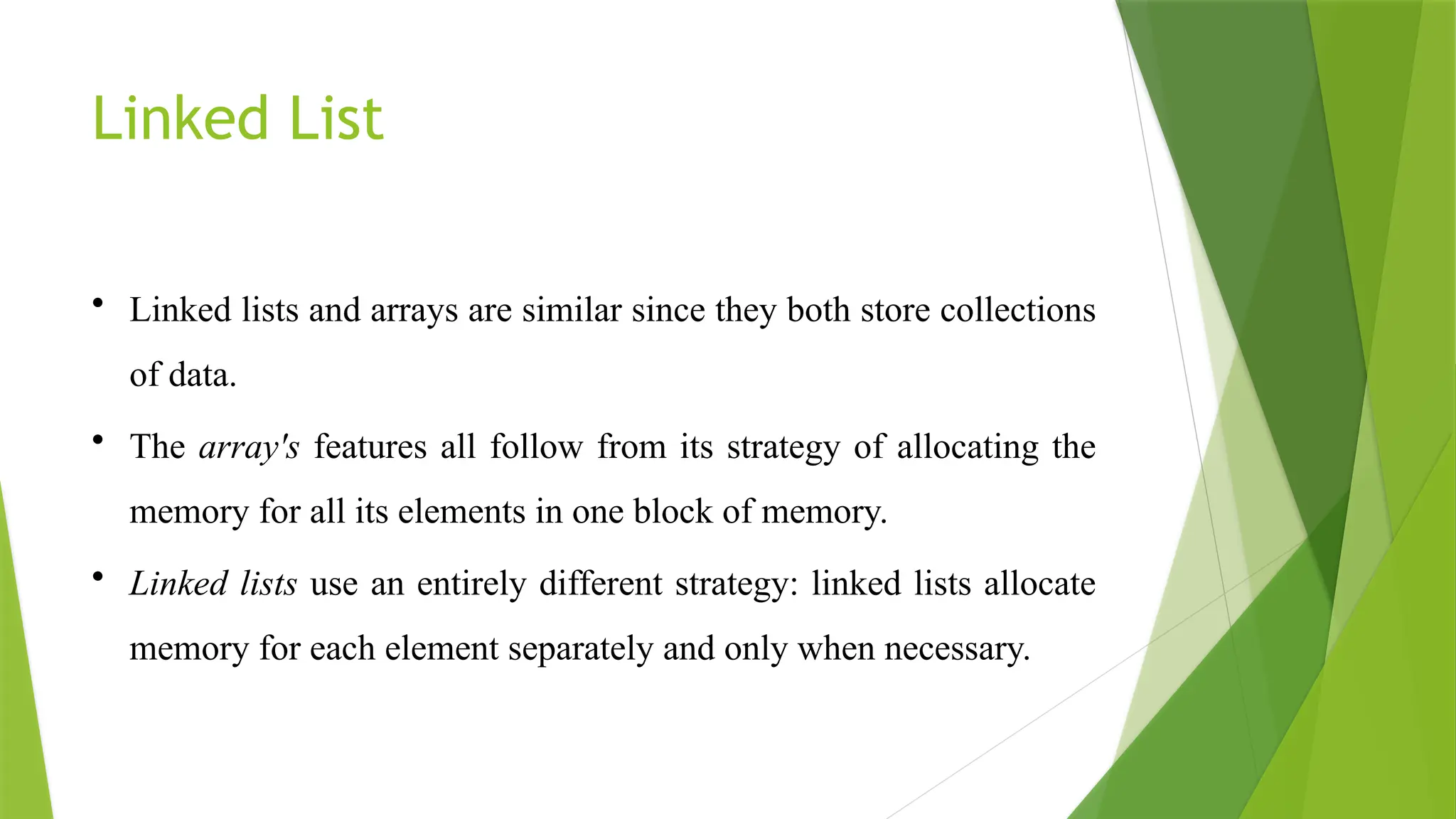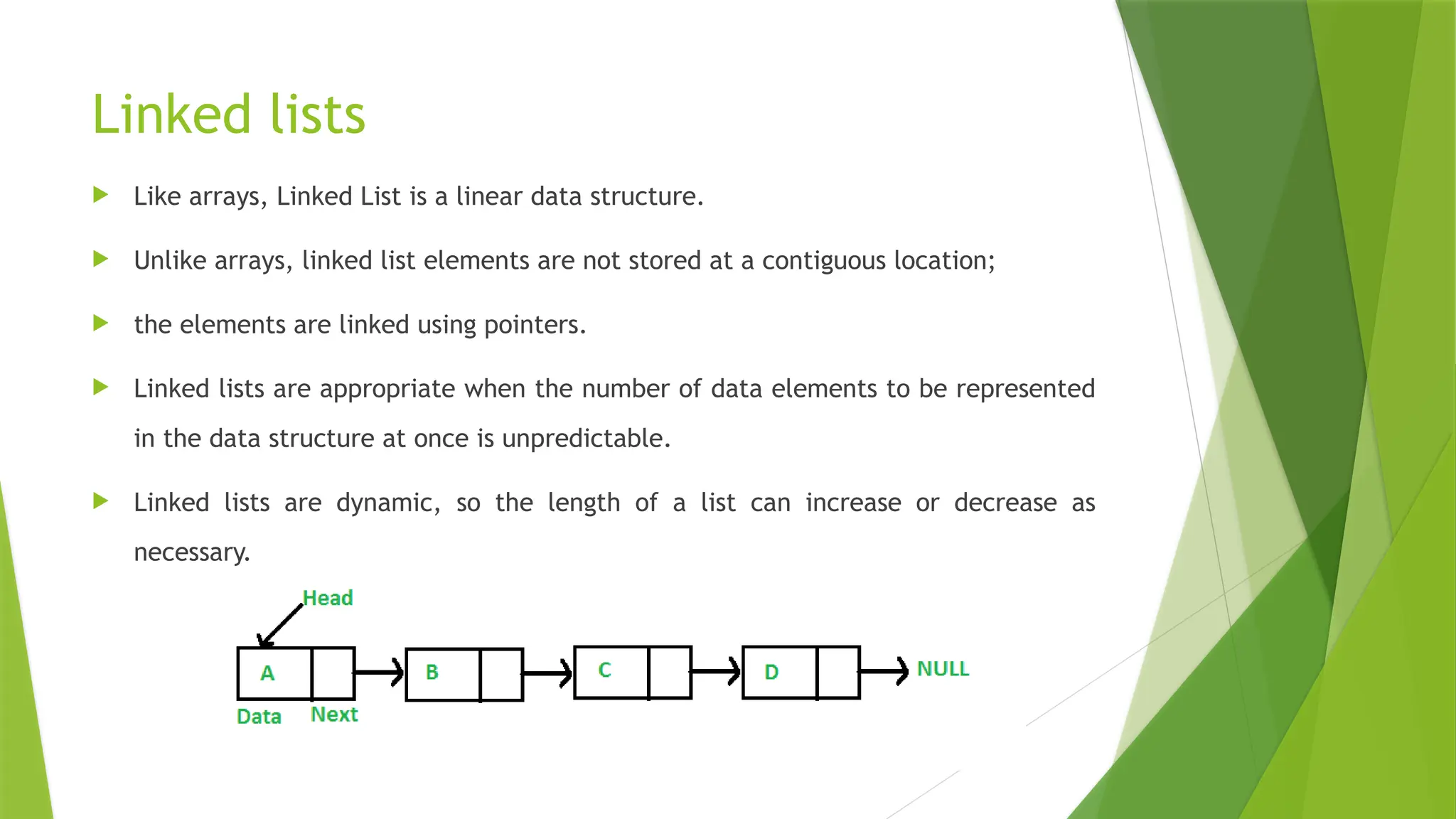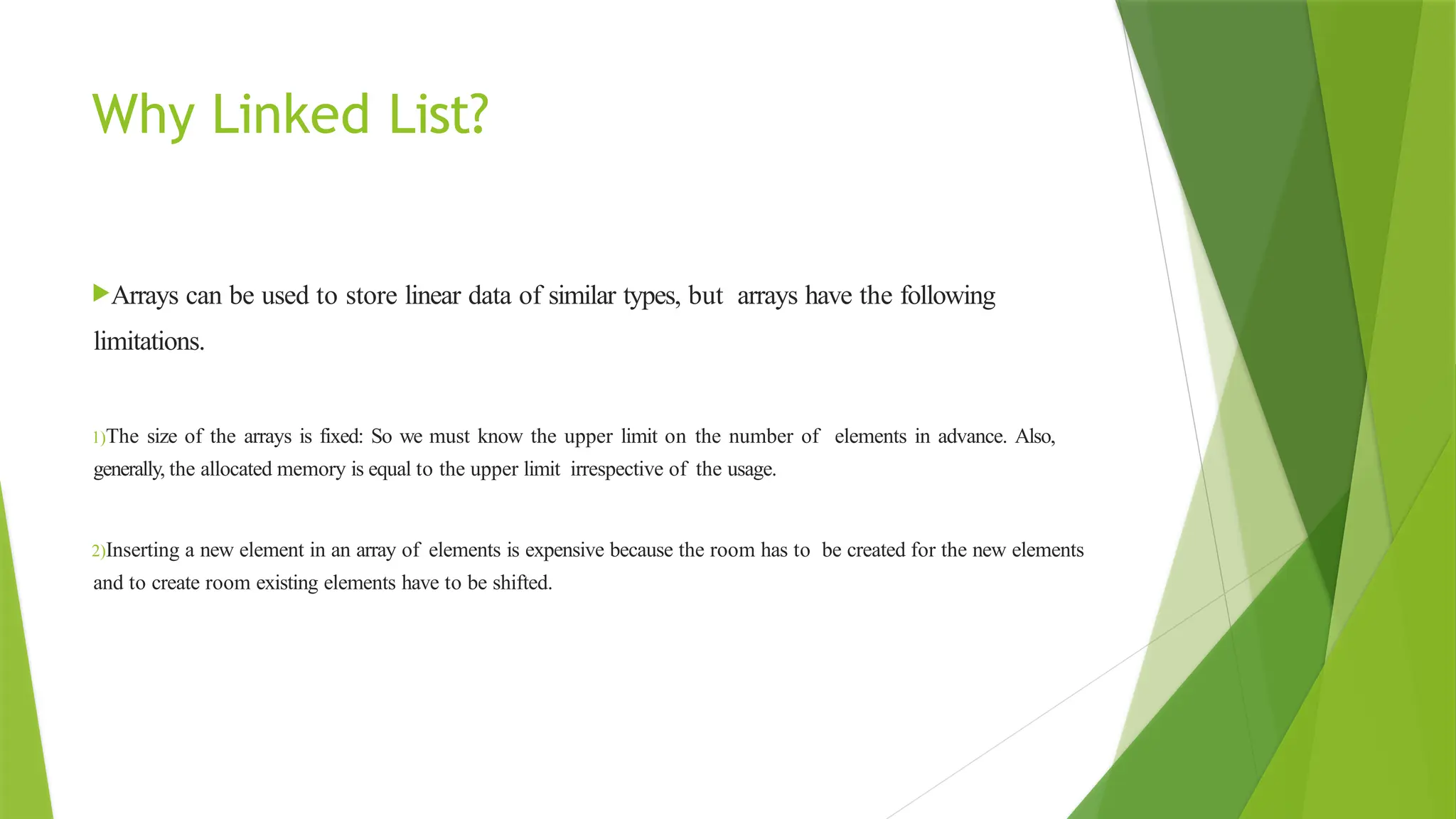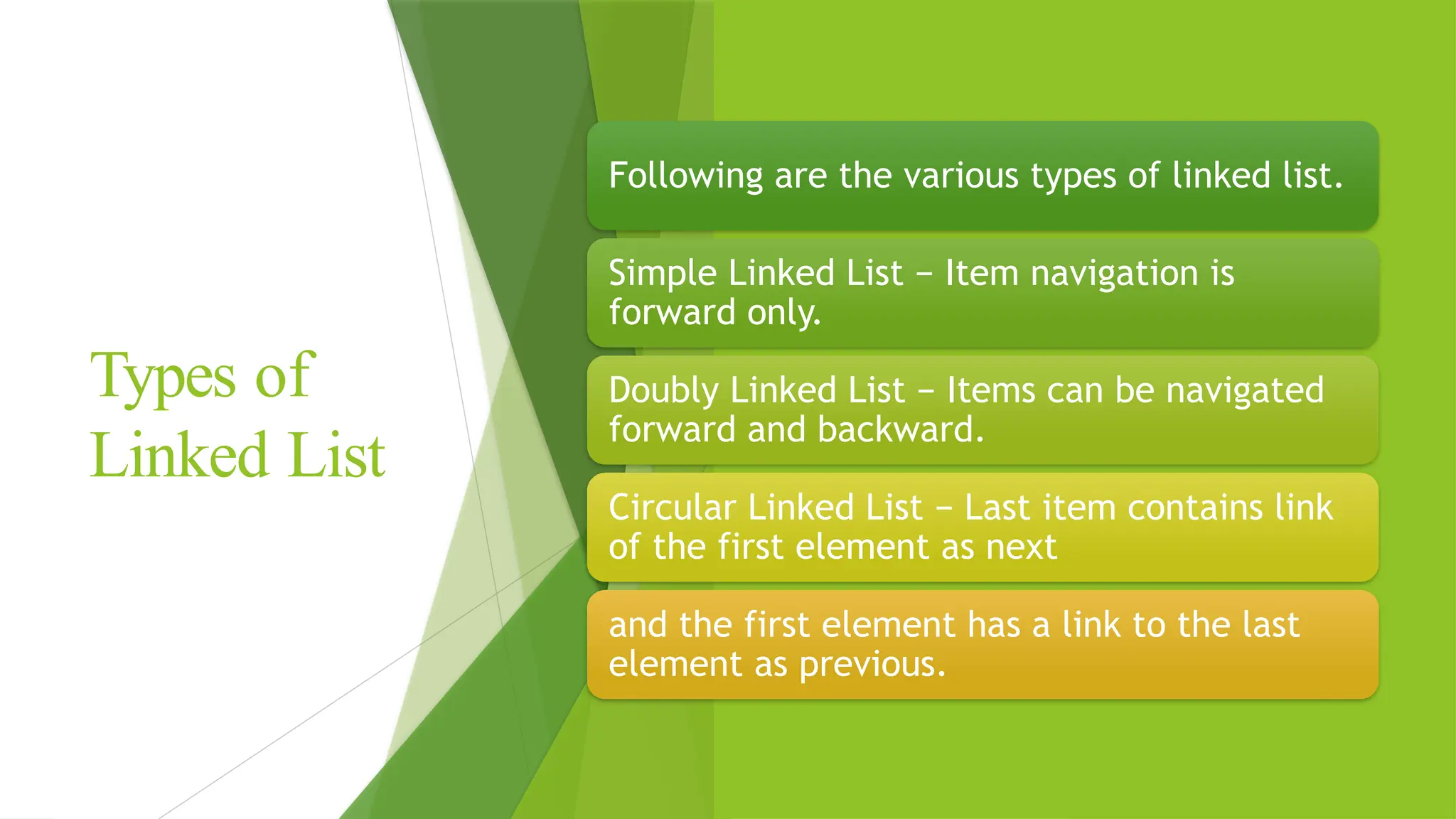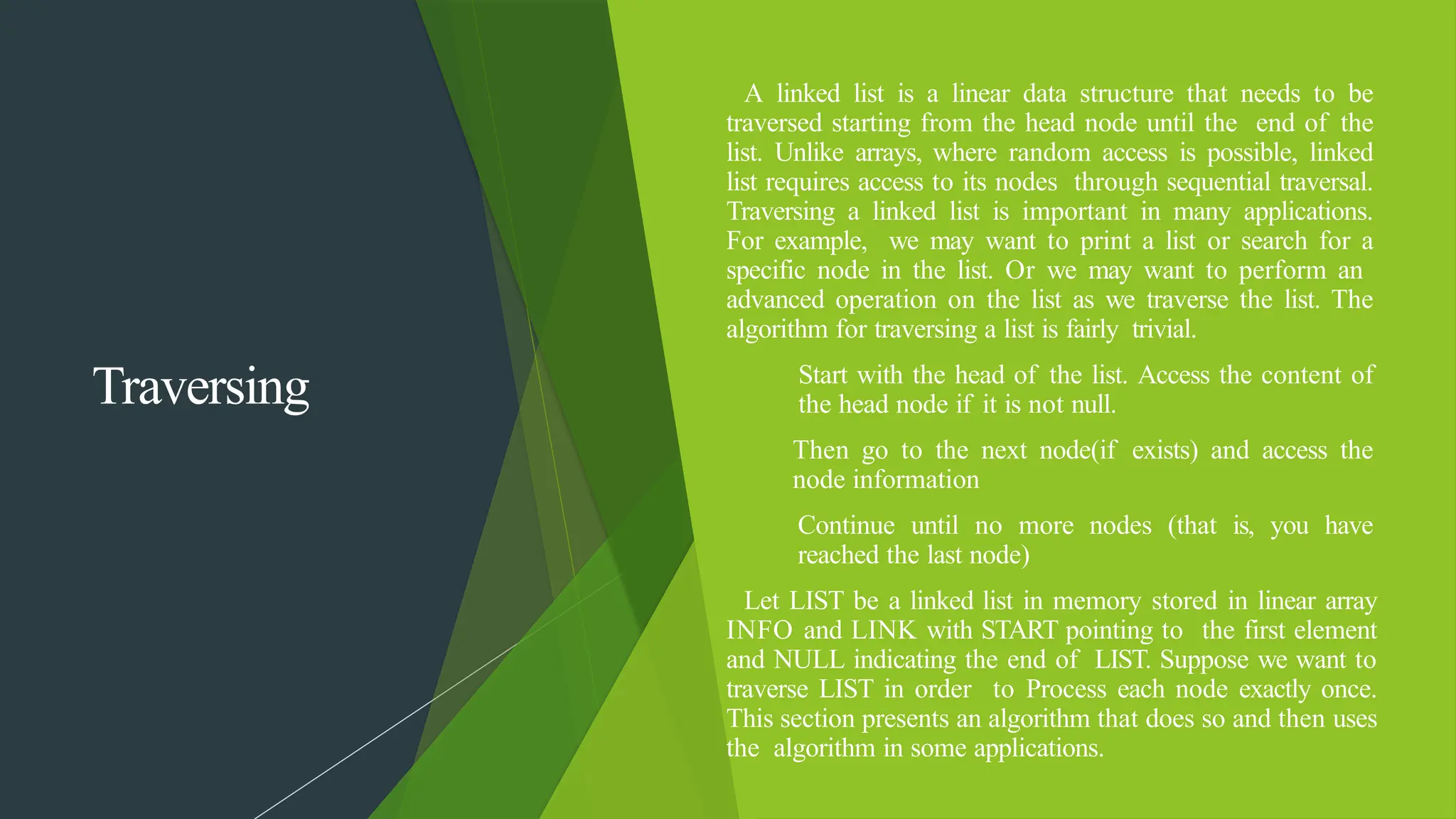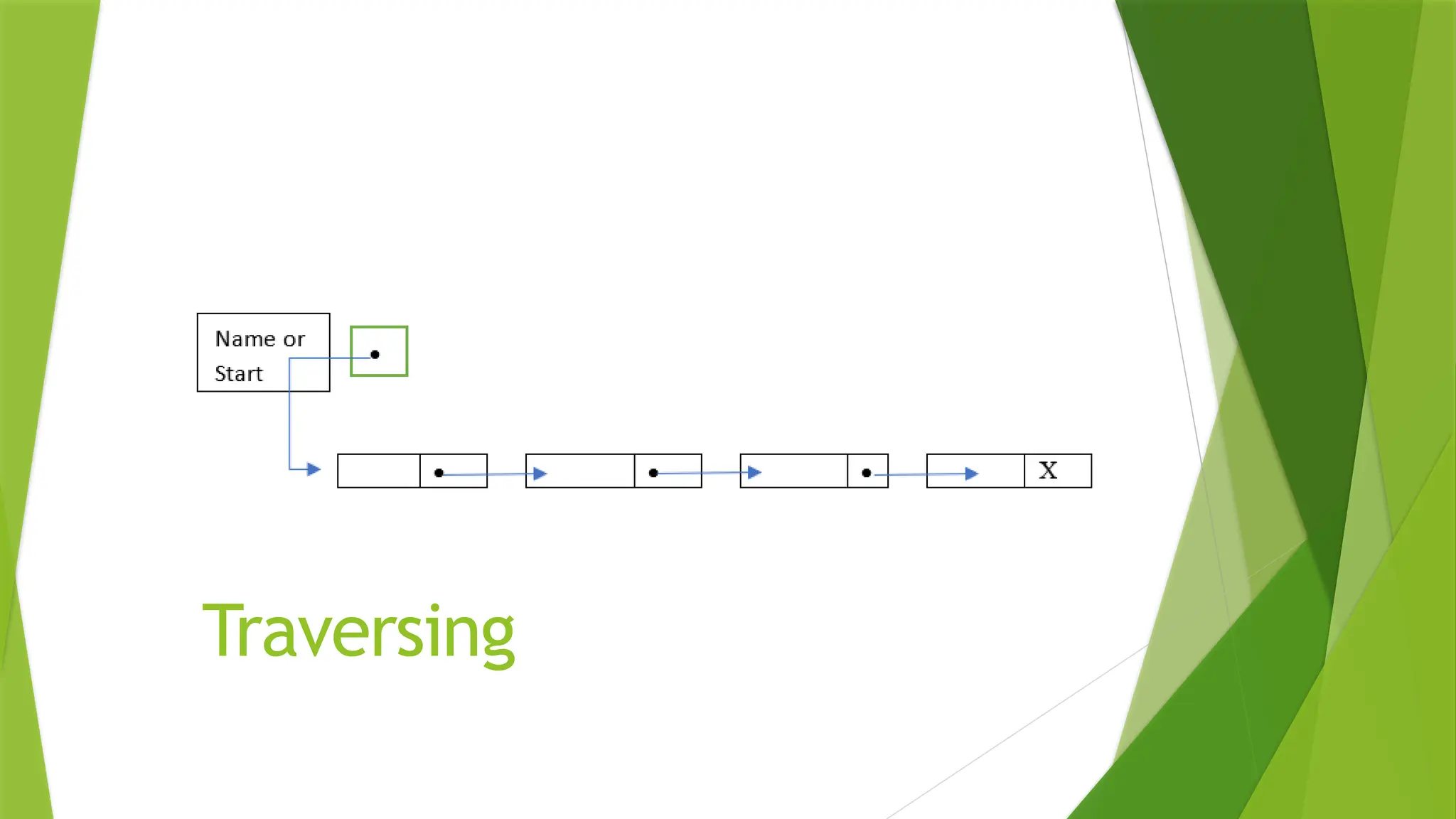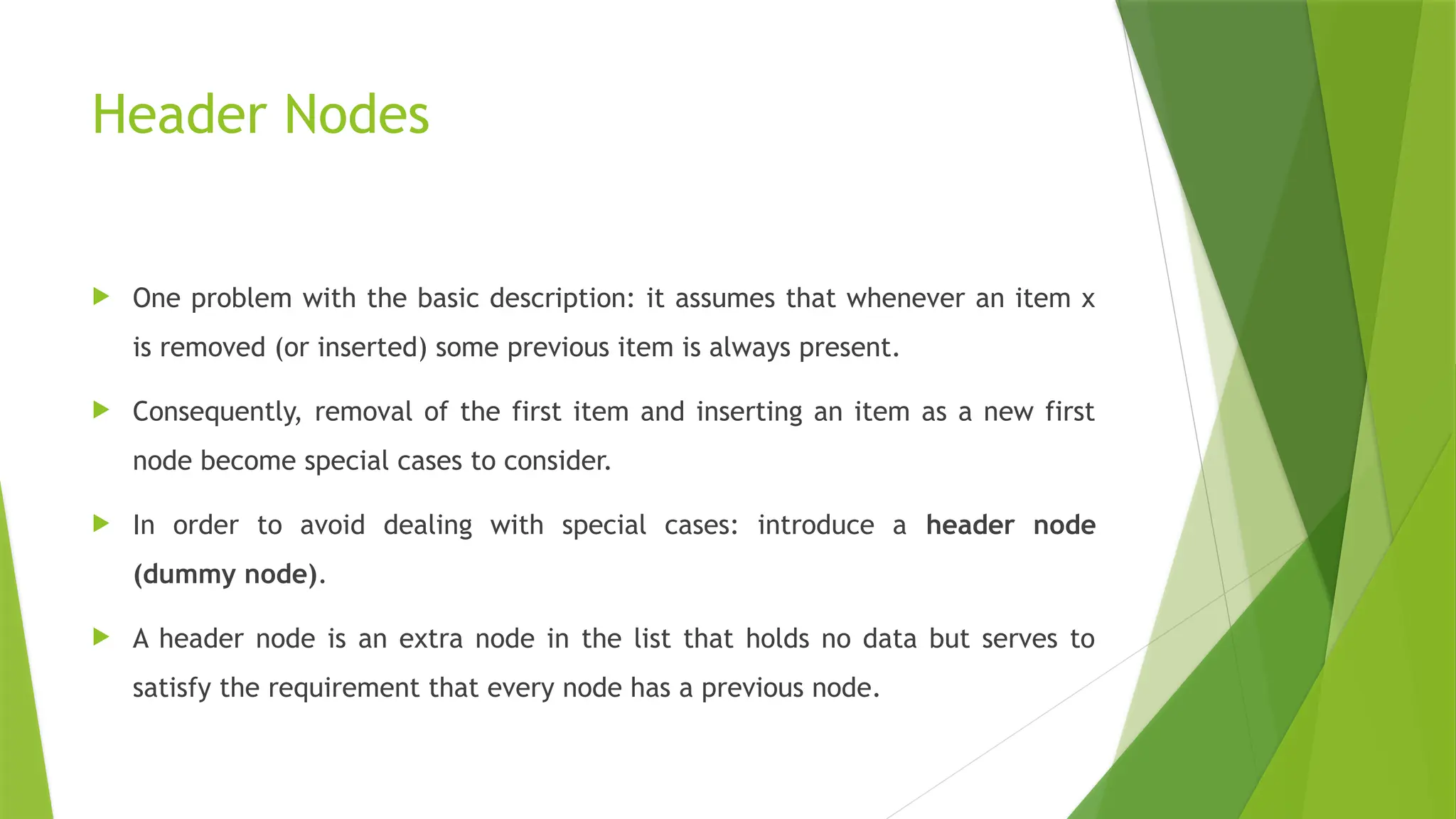The document discusses linear data structures, focusing on linked lists and their operations in C++. It contrasts linked lists with arrays, highlighting linked lists' advantages such as dynamic sizing and efficient insertions/deletions, while also covering types of linked lists and basic operations like traversal and search. It emphasizes the importance of header nodes for managing special cases during insertion and removal of nodes.


